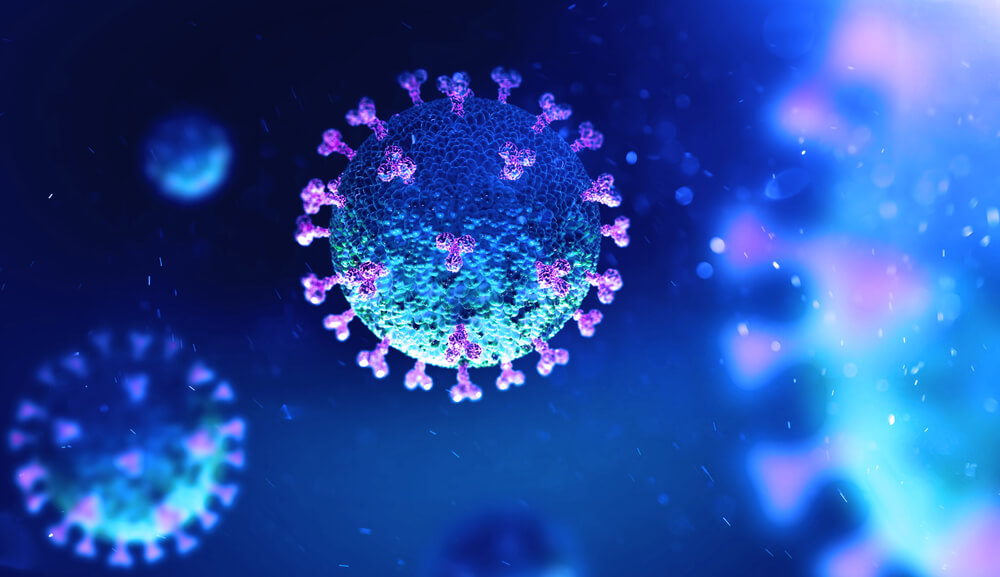A breakthrough for effective treatment: scientists have identified six types of COVID-19
Scientists have identified six different types of COVID-19, each with a specific set of symptoms. It's a breakthrough that could help doctors predict which patients are most at risk. Writes about this Sky News.

Photo: Shutterstock
Various forms of the disease are believed to determine its severity among those infected. It depends on whether they need respiratory support during hospitalization.
Scientists say the study will have a major impact on treatment decisions during a potential second wave of coronavirus and could "save lives."
While prolonged coughing, fever and loss of smell are usually highlighted as the three key symptoms of COVID-19, data collected from approximately 1600 users of the COVID Symptom Study app in the UK and the US shows that people can experience a wide range of very different symptoms.
These can include headaches and muscle aches, fatigue, diarrhea, confusion, loss of appetite, shortness of breath, and more.
The researchers concluded that the appearance of any of the six main clusters of symptoms in each infected person usually indicates how quickly the disease will progress and how seriously the person may become ill.
The researchers presented six distinct groups—or types of COVID-19—as follows:
- Type 1. “Flu-like” without fever - headache, loss of smell, muscle pain, cough, sore throat, chest pain, no fever.
- Type 2. “Flu-like” with fever – headache, loss of smell, cough, sore throat, hoarseness, fever, loss of appetite.
- Type 3. Gastrointestinal - headache, loss of smell, loss of appetite, diarrhea, sore throat, chest pain, lack of cough.
- Type 4. Severe Level 1 Fatigue - Headache, loss of smell, cough, fever, hoarseness, chest pain, fatigue.
- Type 5. Severe Level 2, Confusion - Headache, loss of smell, loss of appetite, cough, fever, hoarseness, sore throat, chest pain, fatigue, confusion, muscle pain.
- Type 6. Severe Level 3, Respiratory Failure - Headache, loss of smell, loss of appetite, cough, fever, hoarseness, sore throat, chest pain, fatigue, confusion, muscle pain, shortness of breath, diarrhea, abdominal pain.
Patient outcomes varied widely, from mild flu-like symptoms or a simple rash to severe illness or death.
Researchers identified six groups of symptoms that occurred at the same moments of the development of the disease, as well as the likely severity, which, as a rule, corresponds to each of them.
On the subject: Mouse, pangolin, laboratory: scientists cannot understand where the coronavirus came from
The research team said that while some of the listed symptoms, such as confusion, abdominal pain, and shortness of breath, were not widely associated with COVID-19, they were signs of its most severe forms.
It was found that only 1,5% of people in group 1, 4,4% of people in group 2 and 3,3% of people in group 3 require mechanical ventilation.
These figures were 8,6%, 9,9% and 19,8% for groups 4, 5 and 6 respectively - while almost half of patients in group 6 ended up in hospital, compared with only 16% in group 1.
The researchers said that generally, people in groups 4, 5, or 6 were older and weaker, more likely to be overweight, and had underlying medical conditions, such as diabetes or lung disease.
Having identified the different types, the scientists then combined information about the age, gender, body mass index (BMI), and comorbidities of symptomatic patients, each of which appeared within five days of onset.
This allowed them to develop a model that they say predicts more accurately—and, crucially, sooner—which group each patient falls into and how likely they are to require hospital treatment and ventilation.
Dr. Claire Steves of King's College London said: “These findings are important for the care and monitoring of people who are most vulnerable to severe COVID-19.”
“If you can predict the likelihood of illness on day five, you have time to support them and take early action such as monitoring blood oxygen and sugar levels - simple care that can be provided at home, preventing hospitalization and saving lives.” , she noted.
And Sebastian Urcelin, professor of public health at King's College London and senior author of the study, said the study "had a profound impact on understanding the severity and impact of COVID-19 on the body."
Professor Tim Spector added that the results showed the importance of getting used to daily applications by people, "helping to stay ahead of the second wave of infection."
Read also on ForumDaily:
Why young athletic people can't recover from COVID-19 for months
Mouse, pangolin, laboratory: scientists cannot understand where the coronavirus came from
Chronic COVID-19: why coronavirus symptoms can last for months
Scientist: asymptomatic COVID-19 does not exist, and coronavirus is a common seasonal disease
Even with a mild form, COVID-19 can affect the brain: what you need to know
Subscribe to ForumDaily on Google NewsDo you want more important and interesting news about life in the USA and immigration to America? — support us donate! Also subscribe to our page Facebook. Select the “Priority in display” option and read us first. Also, don't forget to subscribe to our РєР ° РЅР ° Р »РІ Telegram and Instagram- there is a lot of interesting things there. And join thousands of readers ForumDaily New York — there you will find a lot of interesting and positive information about life in the metropolis.











